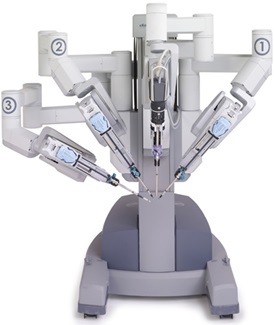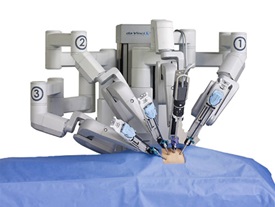
Urology
Urologic Robotic Surgery in La Crosse

Robotic surgical systems provide surgeons who are performing urologic surgeries an alternative to traditional open surgery and minimally invasive laparoscopy, putting the surgeon's hands at the controls of a robotic platform. The system helps surgeons perform even the most complex, delicate procedures through small incisions with superior precision.
Traditional open urologic surgery, using a large incision for access to the urinary system and surrounding anatomy, has been the standard approach for many procedures for years. However, patients of open surgeries can experience significant pain and trauma, long recovery times, and threats to surrounding organs and nerves.
Robotic urologic surgery can be an excellent choice if you are not a candidate for traditional urologic surgery. Your doctor may recommend a robotic procedure if you have surgical scars or an anatomical irregularity that limits your options. Using robotic surgery, surgeons can perform procedures that may have been difficult or impossible with other techniques.
Surgeons have more flexibility, control and maneuverability using the surgical instruments in robotic surgery than in traditional minimally invasive surgery. The robotic system includes a camera arm and several interactive mechanical arms with joints that work like a human's wrist. From the remote console, the surgeon uses two hand-and-finger devices to precisely direct the mechanical arms at the operating table. He or she leads a trained surgical team during the surgery.

Benefits of robotic surgery for urologic procedures include:
- Better clinical outcomes in many cases
- Faster return to normal activities
- Less blood loss
- Less narcotic use
- Less pain
- Less tissue trauma and scarring
- Shorter recovery time
Robotic-assisted urologic procedures include:
- Adrenalectomy, or adrenal removal
- Partial, simple or radical nephrectomy, or kidney mass or kidney removal
- Prostatectomy, or prostate removal
- Pyeloplasty, or reconstruction of the renal pelvis
- Ureter reconstruction